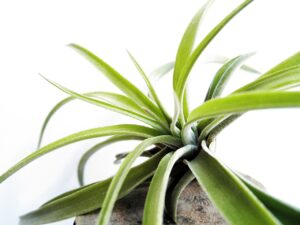Plants are fascinating organisms that have developed intricate processes to survive and thrive. Water is a vital component in the growth and development of plants. In this section, we will explore the mechanisms of how plants use water, including their methods of water absorption, transport, and balance, as well as the effects of water stress and the importance of water conservation in plants.
Key Takeaways:
- Plants have remarkable mechanisms to absorb water from their surroundings through their roots.
- Water moves through a plant’s vascular system, primarily through a tissue called xylem.
- Proper water balance is essential for a plant’s growth and development.
- Water stress negatively impacts a plant’s health and survival.
- Plants have evolved various techniques to conserve water and maximize its utilization.
Plant Water Absorption: The First Step towards Survival
Plants have a remarkable ability to absorb water from their immediate surroundings. Water absorption is crucial to their survival, as it provides plants with the necessary nutrients to grow and produce food.
So how do plants absorb water? It all starts with the roots. Root hairs, microscopic extensions of the root, are responsible for water uptake in plants. These tiny hairs increase the surface area of the roots, allowing them to absorb more water.
Water uptake in plants is influenced by various factors, including soil moisture, temperature, and the size and health of the root system. In general, plants absorb more water when the soil is moist, and the temperature is cool.
It’s also important to note that not all plants absorb water in the same way. For instance, some plants, such as cacti, have adapted to arid environments by developing extensive root systems that can absorb water quickly during rare rainfall events. Other plants, such as water lilies, have adapted to living in water and have specialized structures for water uptake.
All in all, water absorption is the first critical step for plants to survive and thrive. Understanding the mechanisms of water uptake in plants can help us appreciate the complexity of nature’s processes and how vital water is for all living organisms.
Plant Water Transport: Journey through the Xylem.
Now that the plants have absorbed water through their roots, it’s time to explore how water moves through the plant. The primary tissue responsible for water transport is called xylem. This specialized tissue is a network of tiny tubes that runs from the roots to the leaves, carrying water and dissolved nutrients along the way.
Xylem tubes are made up of dead cells that are arranged end to end like a straw. These cells form a continuous pathway for water to move through without encountering any barriers. The movement of water through the xylem is a passive process, meaning it doesn’t require any energy input from the plant.
So, how does water move through the xylem? It’s due to a phenomenon known as transpiration. Transpiration is the process by which water evaporates from the leaves’ surface and exits the plant through tiny pores called stomata. As water evaporates from the leaves, it creates a negative pressure gradient, which pulls water up the plant from the roots.
This process is akin to sucking water through a straw. However, unlike a straw, water in plants doesn’t move in one direction only. It moves up and down the plant, depending on the water requirement of different parts of the plant.
To facilitate efficient water transport, plants have evolved unique adaptations to regulate the movement of water through the xylem. For example, the size of the xylem tubes and the number of stomata on the leaves play crucial roles in water movement in plants.
Overall, the journey of water through xylem is a remarkable feat of nature’s engineering, highlighting the intricate balance of plant processes. By understanding the mechanisms and adapting to them, plants can thrive in a variety of environmental conditions.
Maintaining Plant Water Balance: The Key to Growth
Proper water balance is crucial for a plant’s growth and development. While water is necessary for plant survival, excessive water or limited water availability can cause damage to the plant’s tissues and ultimately impact its growth. To maintain the optimal water balance, plants have developed sophisticated mechanisms to regulate water uptake and loss.
One key factor in maintaining plant water balance is the control of stomatal conductance. Stomata are the small pores on the surface of leaves that open and close to allow for the exchange of gases, including water vapor. By regulating the opening and closing of stomata, plants can control the rate of transpiration, which is the loss of water vapor through the leaves. This process helps to conserve water and maintain a favorable water balance, particularly under conditions of limited water availability.
Another critical component of plant water balance is the efficiency of water uptake through roots. The process of water uptake in plants is regulated by several factors, including plant type, soil type, and water availability. In addition, the presence of root hairs increases the surface area for water absorption, enhancing the plant’s ability to take up water and maintain an optimal water balance.
Overall, understanding the mechanisms that contribute to plant water balance is essential for ensuring optimal plant growth and survival. By managing water uptake and loss, plants can conserve water and thrive in adverse conditions. As such, implementing effective strategies for plant water management is critical for enhancing agricultural productivity and preserving the planet’s natural resources.
Understanding Plant Water Stress: Surviving Adverse Conditions.
As a plant, you are constantly faced with the challenge of surviving adverse conditions, including water scarcity. When you don’t receive enough water, you undergo water stress, leading to reduced growth and productivity and, in severe cases, even death.
Water stress occurs when the demand for water exceeds the supply, leading to a loss of turgor pressure in your cells. This, in turn, affects critical cellular processes, including photosynthesis and respiration, which are necessary for growth and survival.
Your ability to cope with water stress depends on various factors, including your genetic makeup, environment, and the duration and severity of the stress. Some plants have evolved mechanisms to resist water stress, such as developing deep root systems to tap into moisture deeper in the soil.
Others have developed drought avoidance strategies, such as shedding leaves and entering dormancy to conserve water. These mechanisms enable survival during times of water scarcity, allowing you to resume growth and productivity when conditions improve.
Therefore, understanding how to manage water stress is critical for your survival as a plant. By employing effective strategies to cope with water stress, you can ensure your growth and productivity are not compromised, even in adverse conditions.
Water Conservation in Plants: Nature’s Resourcefulness
Plants have evolved a range of ingenious strategies to manage their water needs, ensuring efficient utilization and conservation of this precious resource.
One such strategy involves adaptations in leaf structure and orientation. Some plants, such as cacti, have reduced leaf surface area to minimize water loss through transpiration. Others, like succulents, have specialized water-storing tissues in their leaves to help them survive in arid environments.
Root systems also play a crucial role in plant water management. Some plants have deep root systems that can access water deep underground, while others have shallow, spreading roots that can quickly absorb surface water after rainfall. Additionally, some plants have adapted to grow in areas with high water tables, enabling them to access moisture without having to develop deep roots.
Another important factor in plant water conservation is stomatal control. Stomata are small pores on the surface of leaves that allow for gas exchange but also result in water loss through transpiration. Plants can regulate these pores to reduce water loss during times of drought or water stress.
Overall, plants demonstrate remarkable resourcefulness in managing their water needs. By understanding these strategies, we can appreciate the intricate design of nature and the importance of water conservation in supporting the growth and survival of plants.
Conclusion: Unlocking the Wonders of Plant Water Usage.
Now that you have learned how plants use water, you can appreciate the incredible complexity of nature’s processes. Every step of water absorption, transport, balance, stress response, and conservation is essential to supporting the growth and survival of plants.
By understanding how plants use water, we can also appreciate the significance of water conservation and management. Without proper water resources, plants cannot thrive, and the delicate balance of our ecosystem is disrupted. Therefore, it is crucial to take action to conserve water and ensure its availability for future generations.
So, the next time you water your garden or admire the plants in a park, remember the intricate design of nature’s processes that make it all possible.
FAQ
Q: How do plants absorb water?
A: Plants absorb water through their roots from the soil, using a process called water uptake in plants. The roots have specialized structures called root hairs that increase their surface area and enhance water absorption.
Q: How does water move within plant cells?
A: Water moves within plant cells through a process called water movement in plant cells. It primarily occurs through osmosis, where water moves from an area of higher concentration to an area of lower concentration.
Q: How do plants maintain water balance?
A: Plants maintain water balance through a combination of water uptake and loss. They regulate water absorption, transpiration, and stomatal control to ensure they have enough water without losing excessive amounts.
Q: What is plant water stress?
A: Plant water stress occurs when plants experience a water deficiency. It can lead to wilting, reduced growth, and even plant death. Plants have various adaptive mechanisms to cope with water stress and minimize its impact.
Q: How do plants conserve water?
A: Plants conserve water through various strategies. They have adaptations in their leaves, such as waxy coatings or reduced surface area, to minimize water loss. They also optimize their root systems to efficiently absorb available water and regulate stomatal openings to control transpiration.




